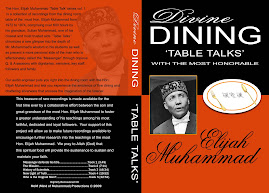© Thomson Reuters 2009 All rights reserved
Friday, September 4, 2009
Beijing's derivative default stance rattles banks Industries Financial Services & Real Estate Reuters
Tuesday, September 1, 2009
China Tightening Control of Rare Earth Minerals
China Tightens Grip on Rare Minerals
Inside NYTimes.com
http://www.nytimes.com/2009/09/01/business/global/01minerals.html?_r=1
Information Researched By: Sister Anonymous
The reawakening of Afro-Argentine culture GlobalPost
Reviving Afro-Argentine culture
The reawakening of Afro-Argentine culture
Descendants of slaves are starting to assert their identity but it's not easy in South America's whitest country.
Updated: August 31, 2009 11:45 ET
silence.”
Sunday, August 30, 2009
18 Common Phrases to Avoid in Conversation
What Not to Say During a Job Interview
Don’t say: “My current boss is horrendous.”
Why: It’s unprofessional. Your interviewer might wonder when you’d start bad-mouthing her. For all you know, she and your current boss are old pals.
Instead say: “I’m ready for a new challenge” or a similarly positive remark.
Don’t say: “Do you think I’d fit in here?”
Why: You’re the interviewee, not the interviewer.
Instead say: “What do you enjoy about working here?” By all means ask questions, but prepare ones that demonstrate your genuine interest in the company.
Don’t say: “What are the hours like?” or “What’s the vacation policy?”
Why: You want to be seen as someone who focuses on getting the job done.
Instead say: “What’s the day-to-day like here?” Then, if you’ve really jumped through every hoop and time off still hasn’t been mentioned, say, “Can you tell me about the compensation and benefits package?”
Expert: Mary Mitchell, president of the Mitchell Organization, a corporate-etiquette training firm in Seattle, and author of The Complete Idiot’s Guide to Etiquette (Alpha, $19, amazon.com).
By Kristyn Kusek Lewis
http://www.realsimple.com/work-life/etiquette/sticky-situations/common-phrases-avoid-conversation-10000001698308/page3.html?xid=yshin-rs--conversation4
What not to say: Avoid these common conversational pitfalls
Don’t say: “You look tired.”
Why: It implies she doesn’t look good.
Instead say: “Is everything OK?” We often blurt the “tired” comment when we get the sense that the other person feels out of sorts. So just ask.
Don’t say: “Wow, you’ve lost a ton of weight!”
Why: To a newly trim person, it might give the impression that she used to look unattractive.
Instead say: “You look fantastic.” And leave it at that. If you’re curious about how she got so svelte, add, “What’s your secret?”
Don’t say: “You look good for your age.”
Why: Anything with a caveat like this is rude. It's saying, "You look great―compared with other old people. It's amazing you have all your own teeth."
Instead say: “You look great.”
Don’t say: “I could never wear that.”
Why: It can be misunderstood as a criticism. (“I could never wear that because it’s so ugly.”)
Instead say: “You look so good in skinny jeans.” If you slip, say something like “I could never wear that…because I wasn’t blessed with your long legs.” Follow these tips to shop smart for your own body type.
Expert advice from Clinton Kelly, cohost of the TLC show, What Not to Wear.
What Not to Say in the Workplace
Don’t say: “That’s not my job.”
Why: If your superior asks you to do something, it is your job.
Instead say: “I’m not sure that should be my priority right now.” Then have a conversation with your boss about your responsibilities. In the past year, the rules of the workplace have changed. Learn how to shine at work in the new economy.
Don’t say: “This might sound stupid, but…”
Why: Never undermine your ideas by prefacing your remarks with wishy-washy language.
Instead say: What’s on your mind. It reinforces your credibility to present your ideas with confidence.
Don’t say: “I don’t have time to talk to you.”
Why: It’s plain rude, in person or on the phone.
Instead say: “I’m just finishing something up right now. Can I come by when I’m done?” Graciously explain why you can’t talk now, and suggest catching up at an appointed time later. Let phone calls go to voice mail until you can give callers your undivided attention.
Expert advice from Suzanne Bates, president and chief executive officer of Bates Communications, an executive-training firm in Wellesley, Massachusetts, and author of Speak Like a CEO.
partner
- by Real Simple Magazine, on Mon Aug 24, 2009 8:10am PDT









































http://www.misibamba.org
http://bakongocandombeafroargentino.blogspot.com/
http://movimientoafrocultural.blogspot.com/